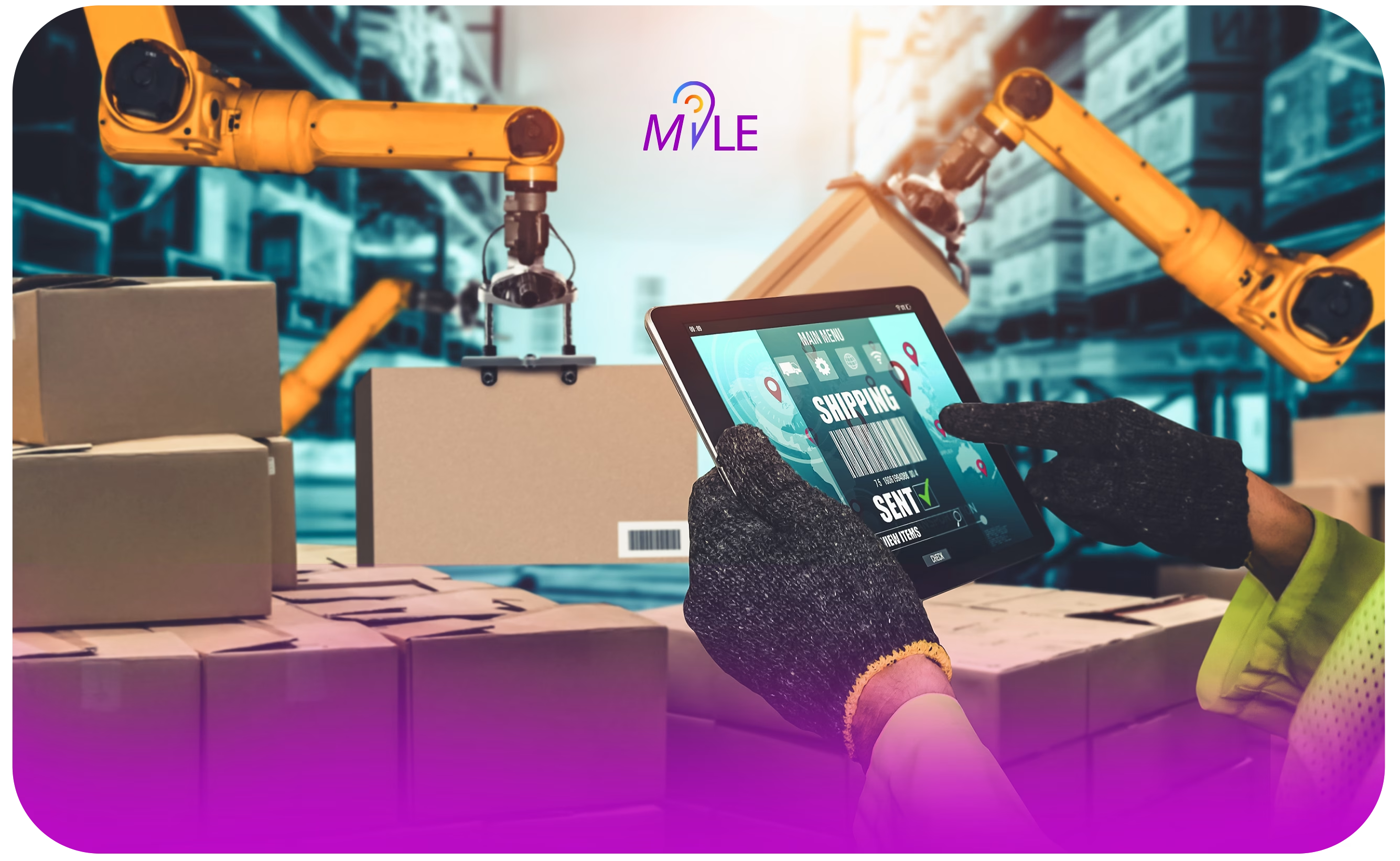What Is Predictive Analytics in Fulfillment Logistics and How Does It Work?
A delivery hub receives a sudden spike in orders during the first week of July. The staff rushes to rework driver rosters, reroute vehicles, and handle customer complaints.
Now, rewind a bit. What if the company had spotted this pattern months ago by digging into past sales data and external triggers like local events or weather?
That’s where predictive analytics steps in: it points you in the direction of what’s coming your way before it hits your desk.
Predictive analytics takes data from the past, runs it through smart algorithms, and gives you insights about what may happen next. It doesn’t rely on gut feelings or vague trends. Instead, it studies patterns that show up over time in sales, shipments, breakdowns, customer behavior, etc., and connects the dots.
Predictive analytics in fulfillment logistics, particularly, can tell you when demand might rise, where deliveries could slow down, or which vehicles might stop working soon. If you’ve got the numbers and the right tools, you can plan for busy periods, fix problems before they spread, and move resources to where they matter most.
Let’s say you’re in the business of moving goods or selling products. Predictive analytics will help you spot demand before it even hits your shelves. It can look at last year’s sales, add in current market conditions, and throw in a few seasonal trends to tell you how much to stock and when. This often translates to fewer empty shelves, fewer excess goods in storage, and more satisfied customers.
Now for the highlight, you don’t need to be a data scientist to understand the basics. Predictive analytics depends on techniques like regression analysis, time series forecasting, and data mining. For example, regression helps you understand how one factor affects another. Time series forecasting tracks how data points rise and fall across time. Data mining pulls out hidden patterns from huge amounts of information. When you bring all of this together, you end up with practical predictions you can actually use.
At the end of the day, predictive analytics in logistics ensures you never lose control of your fulfillment and delivery operations. It gives you a stronger grip on your workflows and clears the fog that usually clouds business decisions.
You start to see what usually follows what. You don’t leave anything to chance. You get a jump of things and make early preparations. This shift in mindset, in turn, sets your business apart in a world that is constantly becoming more and more competitive.
How Does Predictive Analytics Work?
Alright, so you just read that predictive analytics can help you outperform your competitors.
But how does it actually work under the hood?
Let’s break it down in plain English, no tech mumbo jumbo!
First things first, predictive analytics can’t work its magic without data. And not just any data. You need solid, clean, and up-to-date information.
The quality of your results depends heavily on the quality of your input. We cannot overstate this.
If your data is full of holes, duplicates, or outdated information, you’re starting off on the wrong foot.
Does it make sense if you bake a cake using stale or spoiled ingredients and expect it to taste good?
No, right?
So, before diving into models or predictions, sanity-check your data to confirm it’s clean, fresh, and meaningful. That’s the foundation. Without it, you’re building a house on sand.
Now, let’s talk about how that data comes in. There are two main ways. One is called batch processing. This means gathering large chunks of data and running the analysis at set times. It works, but it’s a bit like checking the weather from last week to decide if you need an umbrella today.
The other way is data streaming, which is more like a live news feed. It gives you updates in real time so your decisions are based on what’s happening right now; not yesterday. If you want to have your finger on the pulse, data streaming is the way to go.
Once the data has been collected and cleaned up, it goes through a process called preprocessing. You can visualize this step as giving your data a good polish before handing it over to the prediction models. This includes getting rid of errors, filling in blanks, and making sure everything’s in the same language (figuratively speaking).
You also create new fields or “features” from the existing data that help the system pick up on important patterns. This step is important because it helps your models actually “get it” when it comes to what they’re trying to predict.
Then comes the fun part: model development. This is where the system starts learning from past data. It uses tools like regression analysis, decision trees, etc., and advanced techniques like neural networks.
It works similarly to teaching a student with years’ worth of notes to figure out what’s likely to happen on the next test. The system analyzes historical patterns, connects them with current data, and begins predicting what you can expect in the near future.
But before any model goes live, you first have to check if it delivers what it promises. Validation is the way to find that out.
You test the model on a fresh batch of data it hasn’t seen before. If it does well, great, you’re good to go! If not, it’s back to the drawing board. No one wants to rely on a prediction that can’t hold water.
Once the model proves itself, it’s time to put it to work. The model gets deployed into the real world, where it processes incoming data continuously. But you can’t just set it and forget it. These models need regular check-ups. If you ignore them for too long, they start missing the mark because the world doesn’t stand still. Trends shift, customer behavior changes, and new risks crop up all the time. That’s why regular updates and re-training are necessary to make sure the models remain sharp.
This ongoing adjustment is often called incremental learning. It means the model doesn’t get left behind as things evolve. It keeps learning and adapting. That way, it stays relevant, reliable, and ready to guide your decisions.
And finally, what do you get out of all this?
Forecasts. Risk warnings. Smarter planning.
Suppose your model tells you there’s a spike in demand just around the corner. You can act early, stock up, and meet that demand without scrambling at the last minute. Or maybe it spots signs of trouble in your operations or supply system. Now you’ve got time to fix the issue before it snowballs.
In short, predictive analytics works like your business’s early warning system and planning assistant rolled into one. It watches what’s happening, remembers what happened before, and helps you figure out what to do next. When used right, it saves time, cuts waste, and lets you act with your eyes wide open, because in business, a stitch in time really does save nine.
What Are the Use Cases of Predictive Analytics in Logistics?
Predictive analytics has become a powerful tool for businesses that want to improve their operations and make smarter choices. In fulfillment logistics especially, it comes in handy across the board, from knowing what customers might want tomorrow to making sure goods arrive on time.
If you’ve ever had to deal with unexpected delays, empty shelves, or wasted stock, you’ll know how important it is to plan in advance. Predictive analytics steps in right there and helps tackle these challenges before they grow arms and legs.
In this section, we’ll walk you through some of the most useful ways this technology fits into fulfillment logistics.
1. Demand Forecasting
Of course, no one wants to run out of popular items, but piling up goods that won’t sell is just money gathering dust. By digging through past sales data, market patterns, and even events like public holidays or weather conditions, predictive analytics in logistics helps businesses forecast which products might see a spike in sales, which ones tend to sit around too long, and when it’s time to reorder.
You can use all this information to hold just enough stock and not tie up cash in items that won’t move. When you know exactly what to produce, how much to procure and when to stock up, there’s neither excess nor shortage!
2. Capacity Planning
You can’t run a tight ship if your team is understaffed during busy times or twiddling their thumbs during slow days. Predictive analytics takes a good look at your history, spots patterns, and gives you a sense of how busy the coming weeks or months might be.
The early bird catches the worm, and with these insights, logistics companies and eCommerce businesses make better calls about staffing, equipment use, and space management. When you nail down your capacity optimization, you won’t stretch your resources too thin or let them sit idle.
3. Scheduled Maintenance
Vehicle breakdowns can throw a wrench in the works. But most of the time, delivery vehicles give off signs before they stop working. Predictive analytics picks up on those signs by looking at sensor data, maintenance history, and output logs.
This helps fleet managers take action before things go wrong. Instead of shutting down unexpectedly, they can fix issues during scheduled breaks and avoid major interruptions during peak hours. After all, it’s much easier to fix a small leak than to mop up a flood.
4. Vendor Management
A single delay from a vendor can cause problems all the way down the line. Predictive analytics reviews how suppliers have performed in the past and quantifies key deliverables such as delivery times, quality checks, and issue frequency.
If it sees a pattern of underperformance, it raises concern. That gives teams time to talk with vendors, update service level agreements, or prepare backup options. It’s always better to have a plan in your pocket than be caught by surprise.
5. Timely Course Correction
Trouble almost always comes unannounced. A highway closure, sudden storms, labor strikes, or unexpected political decisions can throw everything off track.
But predictive analytics taps into a wide range of data sources — from weather forecasts and traffic patterns to global news and historical trends — to flag potential bottlenecks before they surface.
This early signal helps multiple teams across your operation course-correct, come what may. The logistics team can preplan optimal routes, reroute shipments on the go, or adjust delivery timelines to account for disruptions. The warehouse crew can adjust inventory plans and bring in stock ahead of time. Procurement can speed up orders from alternate suppliers. The customer service team can update clients with accurate delivery estimates, avoiding last-minute surprises. Even finance can revise cash flow projections to reflect the changes.
With predictive analytics in logistics, every process moves in sync and you don’t get knocked off your feet.
الأفكار النهائية
If you’ve ever had a wise friend with the gift of hindsight, someone who points out your blind spots and advises you on how to avoid them, you’ll find that’s exactly what predictive analytics brings to the table!
Be it forecasting demand or delivering orders on time, it adds value in nearly every corner of fulfillment logistics. Predictive analytics also spots possible issues before they happen, so you have ample time to get your ducks in a row.
Do you wish to do predictive analytics right?
Schedule a demo with Mile today and watch how our logistics management software incorporates predictive analytics to help you stay future-ready, make stronger decisions, and deliver better results, all while living up to their customers’ expectations.

